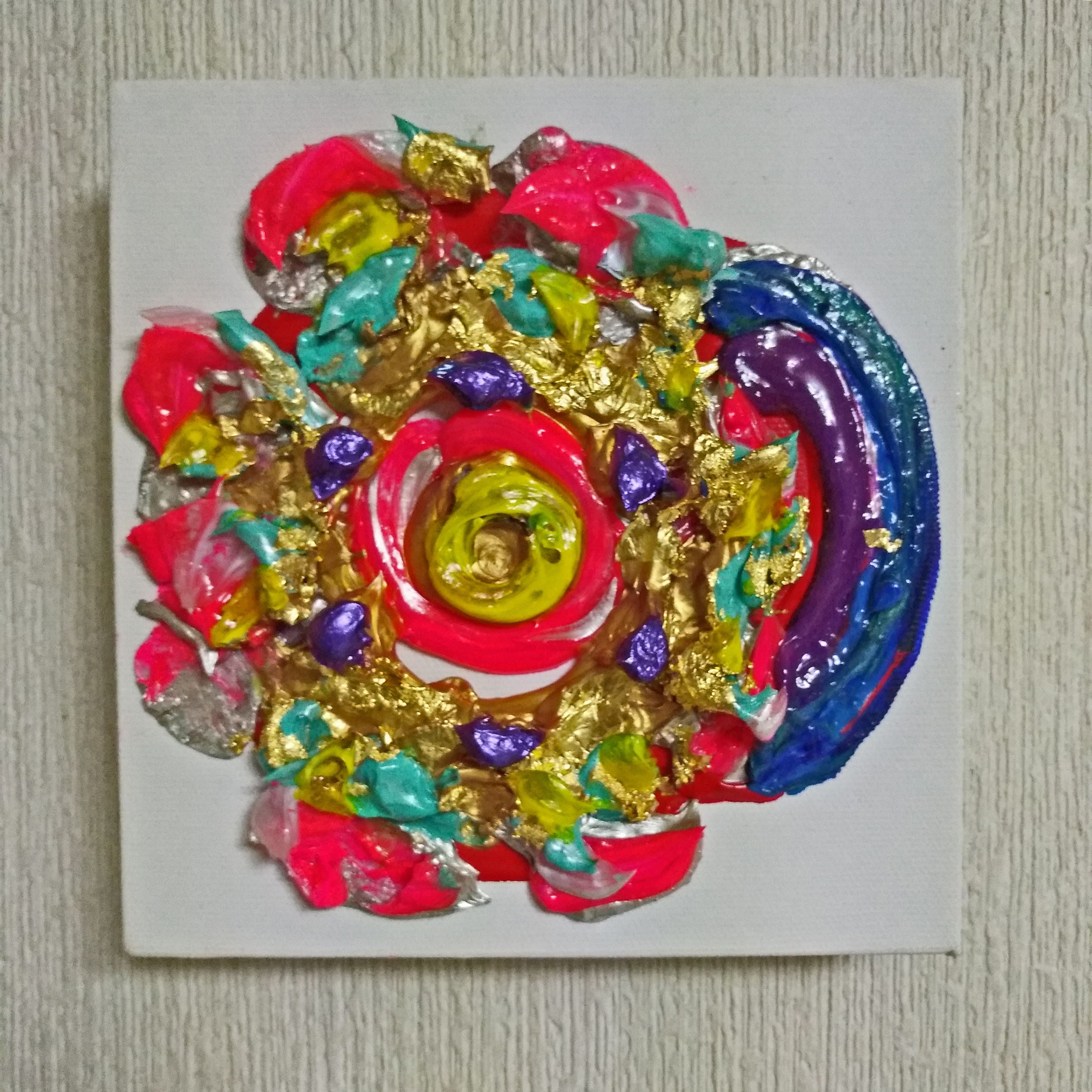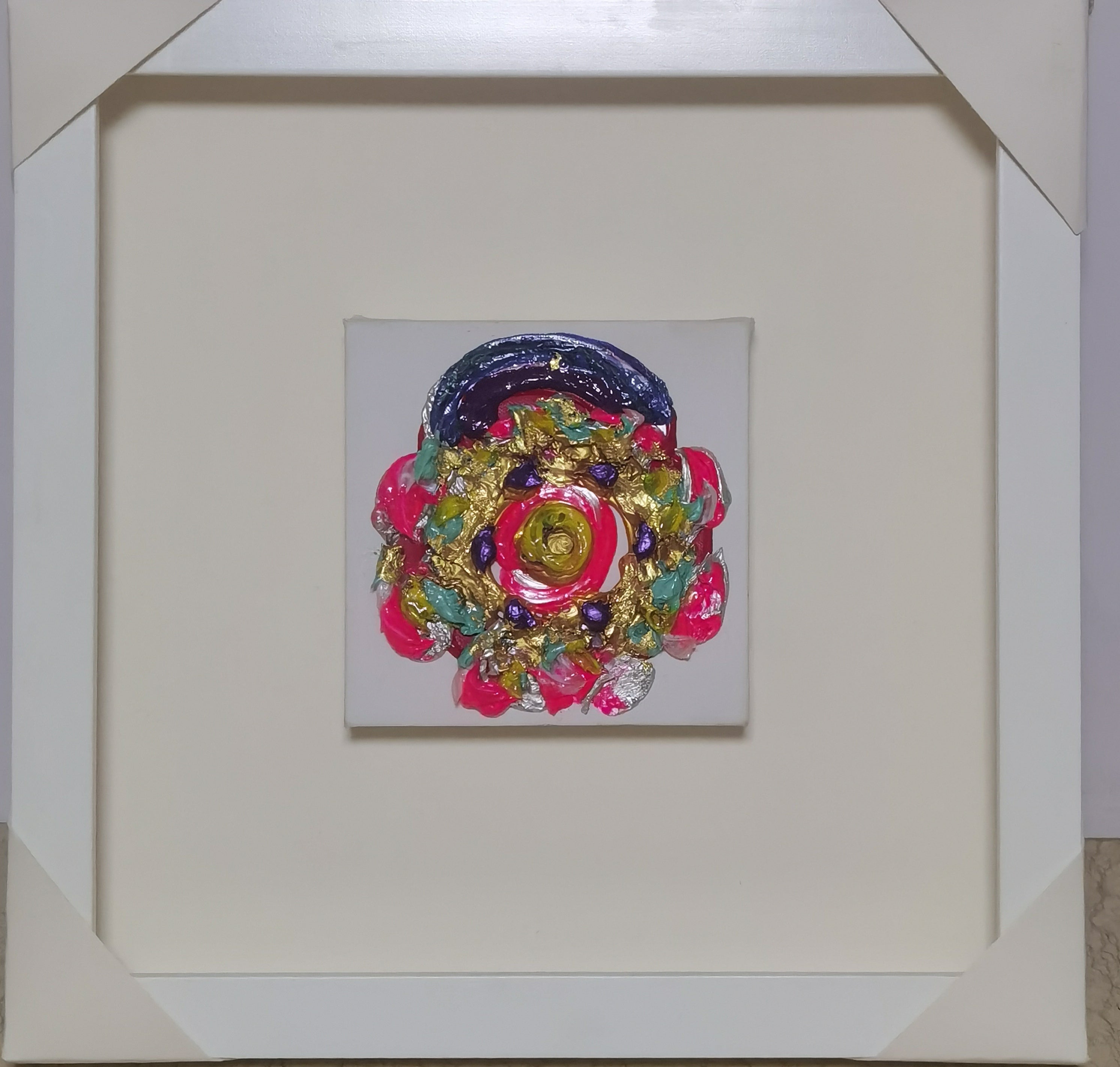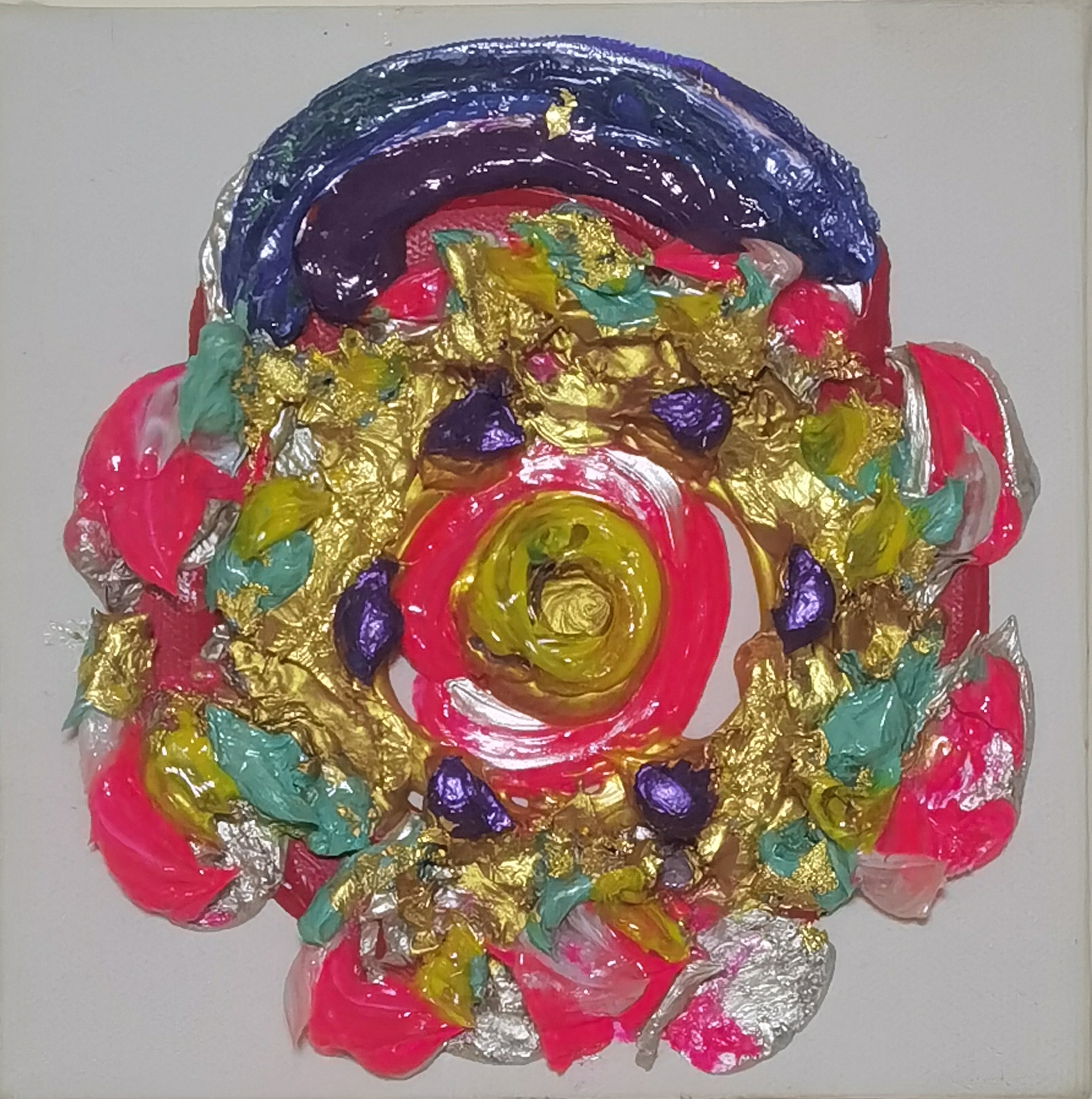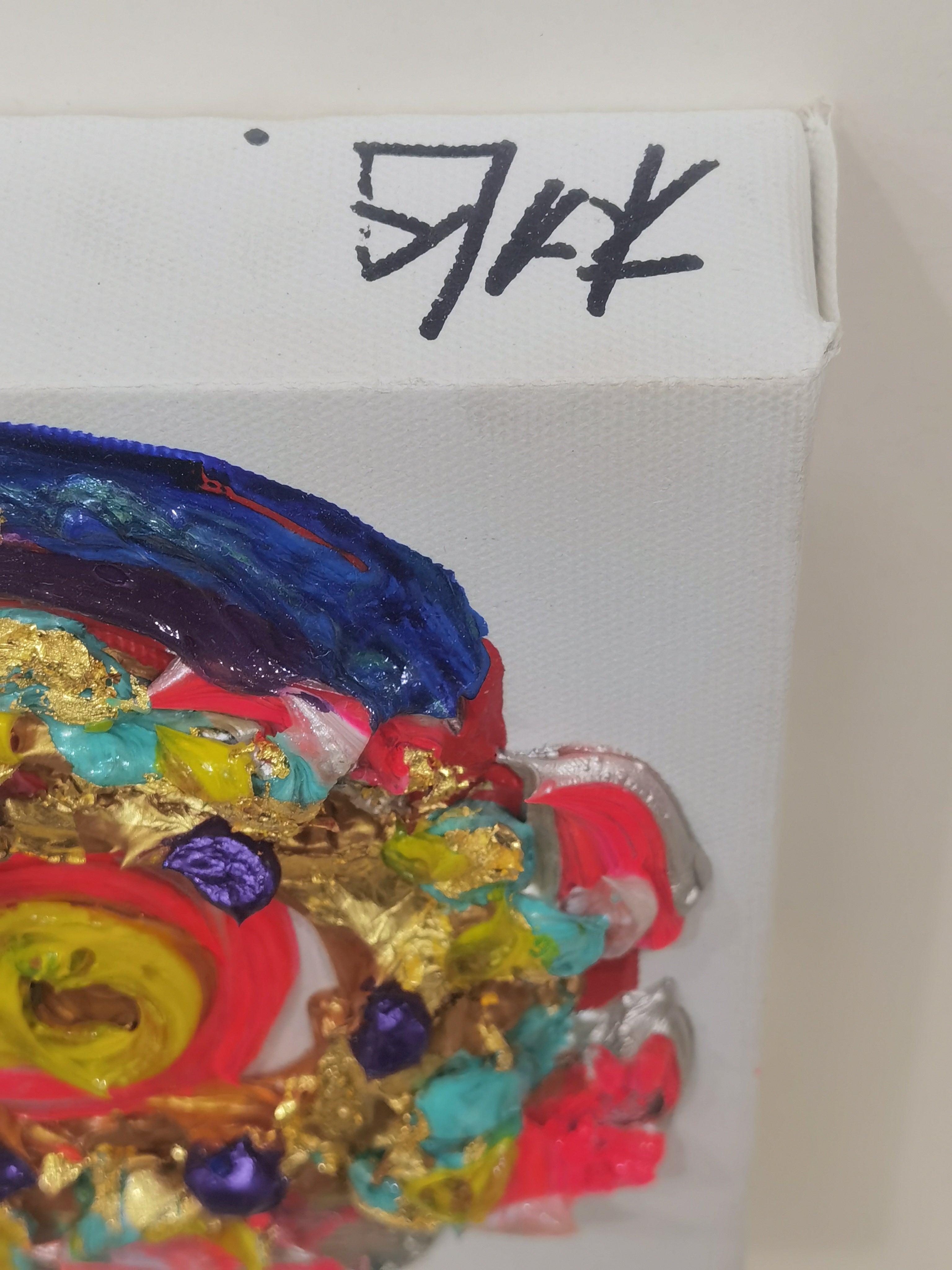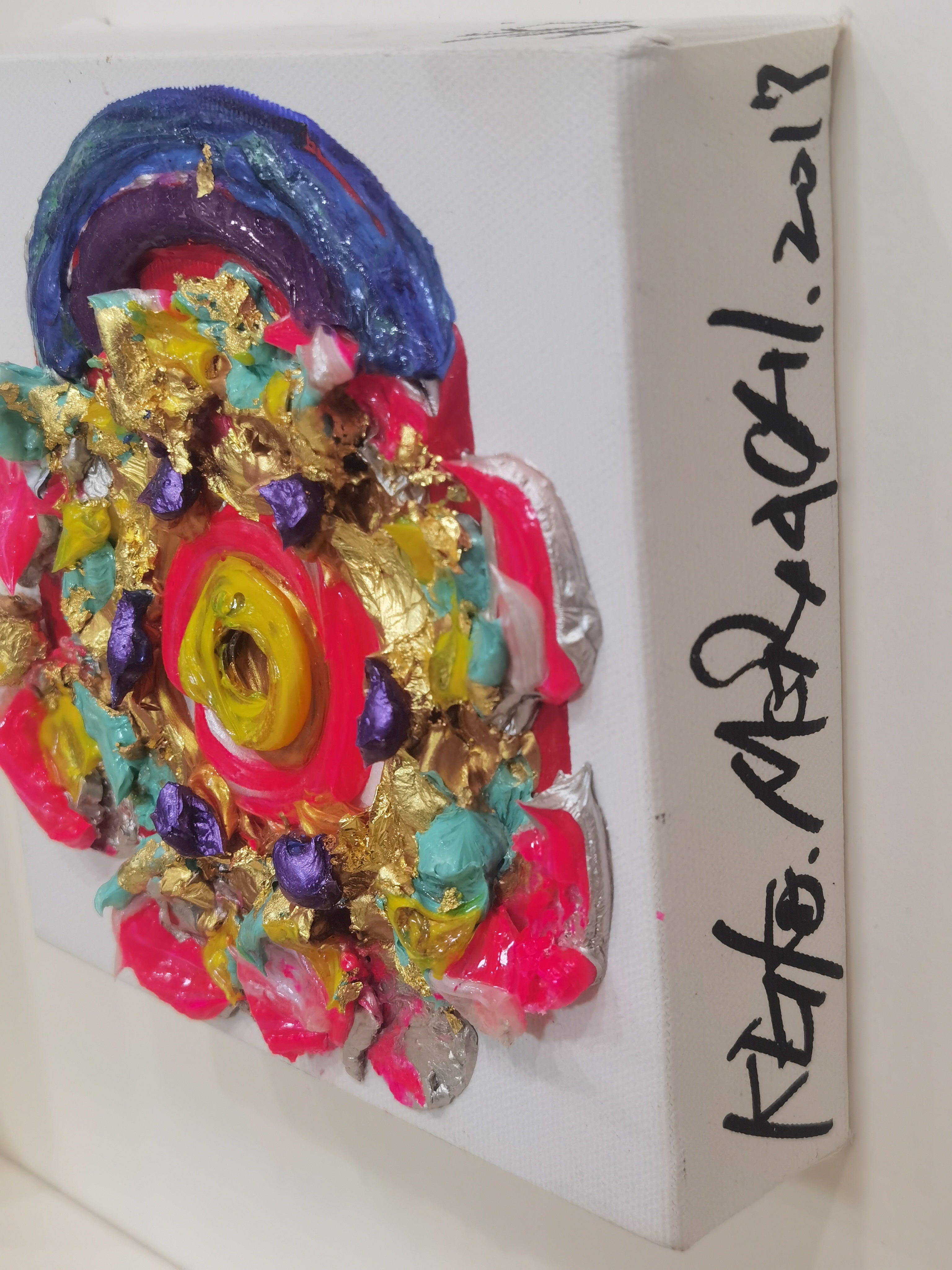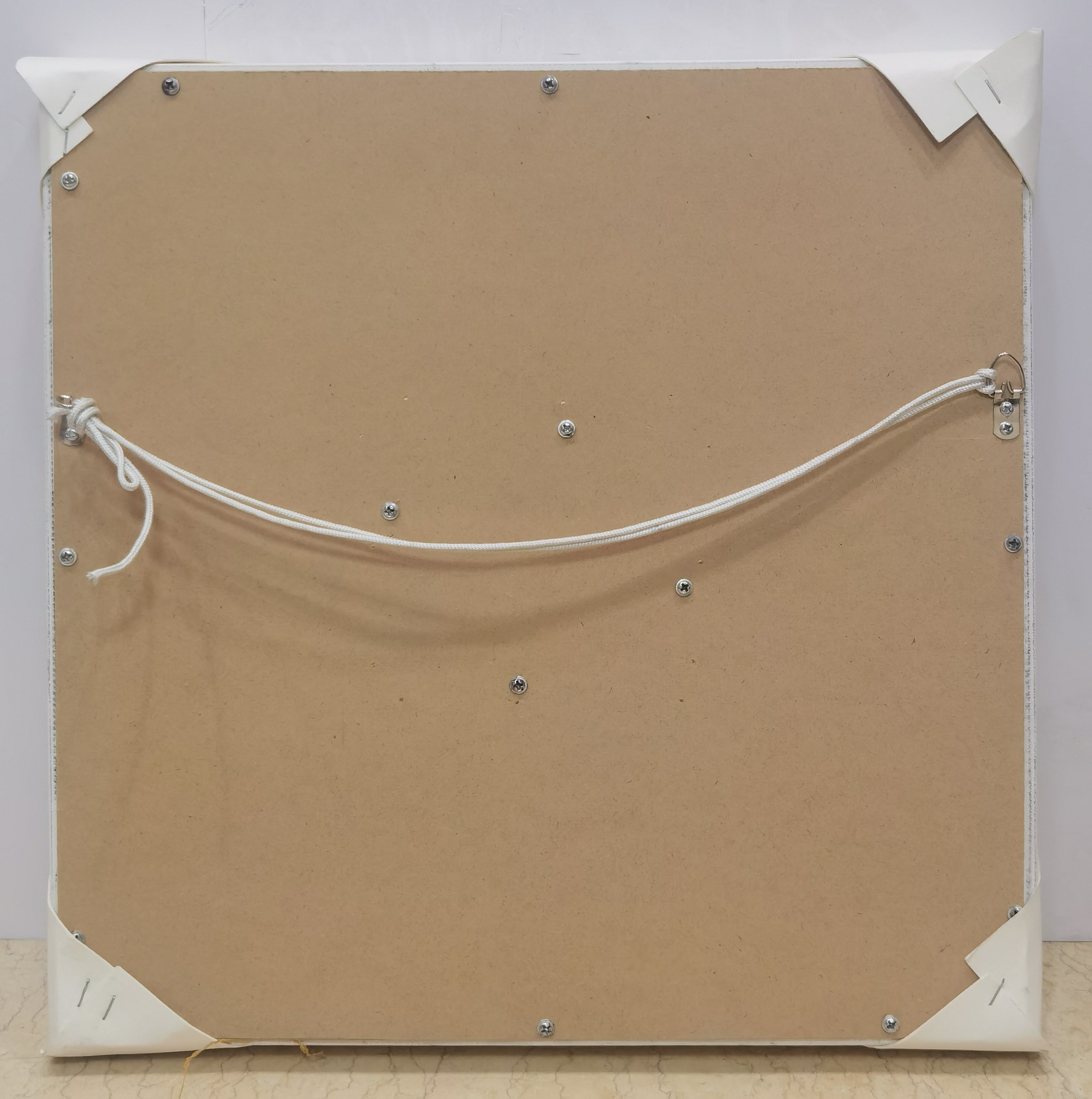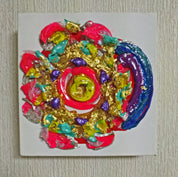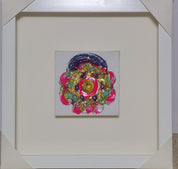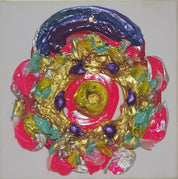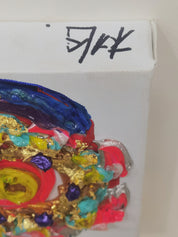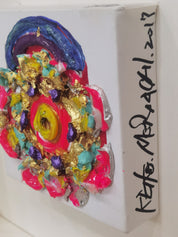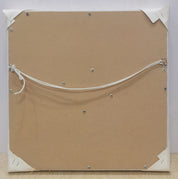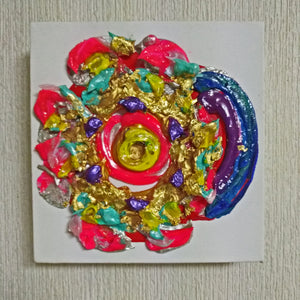Peach of Kunlun Mountain
Keiko Moruchi
Artwork Details
Artwork Description
Title: Peach of Kunlun Mountain
Artist: Keiko Moriuchi
Date: 2013
Medium: Mixed media on canvas (acrylic, impasto pigment, metal leaf)
Dimensions: 13 ⅞ × 13 ⅞ in | 35 × 35 cm
1. Artwork Identification
Keiko Moriuchi’s Peach of Kunlun Mountain is an arresting concentric relief composed of luxuriant impasto, iridescent pigments, and fragments of silver- and gold-leaf. Executed on a square canvas barely larger than a foot in each direction, the work attains sculptural presence through the artist’s signature technique of layering viscous acrylic and metallic foils into a rosette-like vortex that projects several millimetres from the support. Brilliant neon pinks, lapis violets, turquoise greens, and aureate shards orbit a luminous citrine core, evoking the mythical “peaches of immortality” said to ripen once every three millennia on China’s sacred Kunlun peaks.
2. Artistic Style and Influences
Moriuchi (b. 1944) joined the Gutai Art Association in 1968 after periods in Osaka, Paris, and—at Jirō Yoshihara’s urging—New York, where exposure to Abstract Expressionism and Pop catalysed her material experimentation. Peach of Kunlun Mountain embodies Gutai’s credo of letting matter “speak” by foregrounding the tactility of paint, yet its chromatic opulence and mandala-like symmetry align it equally with the decorative spirit of Japanese Rinpa painting and the transcendental geometry of Yayoi Kusama’s early “Infinity Nets.” The compressed scale recalls Lucio Fontana’s baroque “Concetto Spaziale” reliefs, while the sumptuous palette echoes Lee Krasner’s later collaged impastos.
3. Historical Context
Created in 2013, the piece belongs to Moriuchi’s mature “Mythoscape” cycle—works that reinterpret East Asian legends through an international, post-Gutai lens. In a period when East-West cultural hybridity gained new urgency amid globalisation of the Asian art market, Moriuchi revived the Taoist legend of Kunlun’s peaches (symbols of eternal life) as a metaphor for cyclical renewal in both nature and art. The gleaming foils nod to Japan’s Edo-period gold-ground screens, while the gestural acrylic acknowledges the persistence of post-war action painting in contemporary practice.
4. Provenance
Provenance documentation can be provided upon request.
5. Condition and Conservation
The work is preserved in very good condition. Impasto passages retain crisp edges and original gloss; metal-leaf fragments show no oxidation or lifting. No evidence of paint loss, craquelure, or over-painting under raking light. The canvas remains taut on its original stretcher and is housed in a pristine, museum-grade float frame. No immediate conservation intervention is recommended beyond standard preventive measures (stable humidity and UV-filtered lighting).
6. Artistic Significance
Moriuchi’s compact yet opulent canvases are increasingly sought by collectors and institutions reassessing Gutai’s transnational legacy. Peach of Kunlun Mountain exemplifies her fusion of performative materiality with lyrical symbolism, situating her alongside peers such as Atsuko Tanaka in expanding Gutai toward mythic and introspective concerns. With Moriuchi’s recent retrospectives in Kobe (2021) and Seoul (2023) prompting critical re-evaluation, works from the “Mythoscape” series are now considered pivotal bridges between post-war Japanese avant-garde and 21st-century global abstraction.

